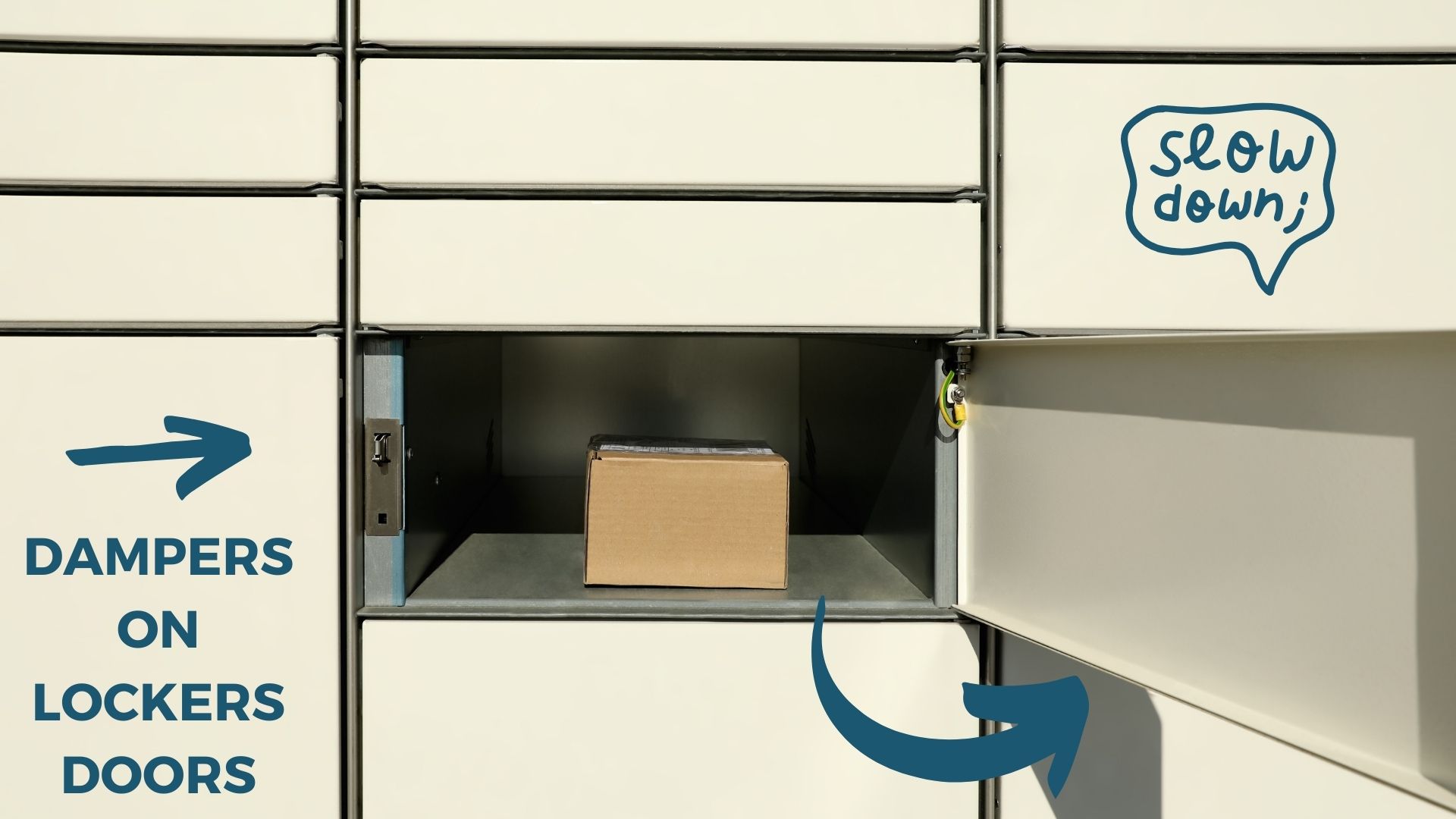The Role of Dampers in Locker Doors
Dampers are small yet essential components designed to control the door's movement, ensuring a smooth, quiet closing action instead of a sudden slam. Here’s why dampers are crucial:
Noise reduction: no more sudden slamming—ideal for offices, residential buildings, and public spaces.
Lower maintenance costs: dampers enhance locker durability, reducing service requests and maintenance costs for manufacturers.
Ease of integration: dampers can be easily installed into lockers with minimal structural modifications.
Enhanced product perception: a soft-closing locker door gives the product a premium feel, increasing the perceived value for your customers.
How Do Dampers Work in Lockers?
Dampers regulate the door’s movement by slowing down its closing speed. This mechanism is especially useful in automated lockers, where a seamless user experience is a must.
Where Are Dampers Used in Lockers?
Many self-service lockers incorporate dampers to improve reliability and ease of use. Whether located in shopping centers, residential complexes, or transit hubs, these systems ensure safer and more efficient interactions.
The Future of Lockers: Quieter, Safer, and More Durable
As demand for automated parcel pickup solutions grows, so does the need for quieter, more durable locker systems. Manufacturers and designers are increasingly focusing on sustainability and user experience, making dampers a key component in the future design of lockers.
Search for the damper that's right for you
or contact us for a customized solution.


